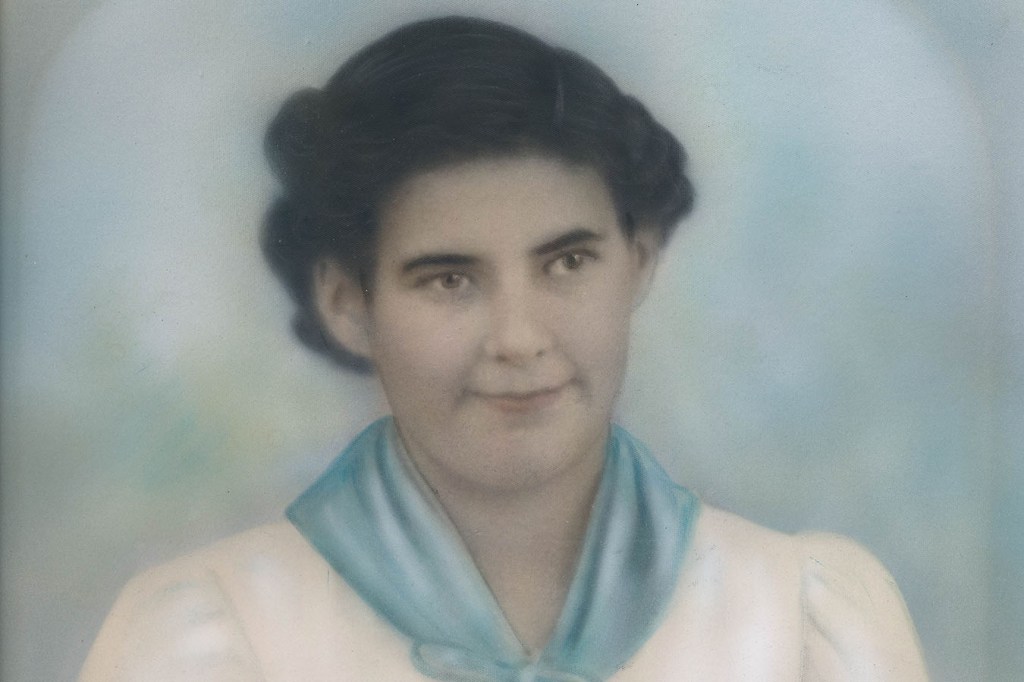Rosie Zaballos liked to host playtime tea parties and was sweet to everyone she met. But her older brother worried that the 16-year-old, whom her family described as “a little slow,” might someday become pregnant.
In his 30s and married, he had three kids of his own. And their mom was sick and needed help. So he took Rosie to be sterilized at a state-run hospital so she couldn’t have babies who might place an extra burden on the family.
Rosie never came home. She died during the operation.
This painful history, recounted by Rosie’s niece, Barbara Swarr, was rarely discussed in Barbara’s family when she was growing up in a Spanish immigrant neighborhood in Hayward, Calif., just southeast of San Francisco.
But in the past few years, Swarr, now 70, has pieced together the details of her aunt’s short life and the prevailing attitudes toward immigrants, poor people and those with disabilities that allowed more than 20,000 Californians to be sterilized under the state’s eugenics law — often without their consent — over a 70-year period in the 1900s.
“This was something nobody thought twice about. ‘If they are not all there, if they are Hispanic … make sure they don’t breed these inferiors,’” Swarr recounted with a mix of sadness and bitterness.
Across the country last century, more than 60,000 people deemed unfit to reproduce were sterilized, many against their will or without their knowledge. It was a public health strategy embraced by 32 states under eugenics laws that advocated “better breeding.” It began at state prisons in Indiana and spread to two-thirds of the country, targeting people with mental illness, disabilities and anyone who exhibited “abnormal” behavior.
California abolished its eugenics law in 1979 during Democratic Gov. Jerry Brown’s first term and apologized in 2003 under Gov. Gray Davis, also a Democrat. Legislation under consideration in the state Senate would go a step further to pay reparations, following in the footsteps of North Carolina and Virginia.
The bill, by state Sen. Nancy Skinner (D-Berkeley), would establish the Eugenics Sterilization Compensation Program for the living survivors of state-sponsored sterilization from 1909 to 1979. As currently written, the measure doesn’t specify the amount of state money survivors would receive — a detail that is still being hashed out by lawmakers.
North Carolina lawmakers in 2013 set aside $10 million, and two years later Virginia authorized $25,000 for each victim.
Researchers and advocacy groups estimate that roughly 800 survivors may still be alive today in California, although none have publicly come forward, whether because they’re ashamed of what happened to them or they just don’t realize they were victims.
Skinner said she hopes that publicity surrounding her bill will encourage survivors to come out and speak out.
“We are trying to ensure this is not forgotten,” she said. “It was a completely unjustified wrong that the state authorized and that the state implemented.”
In California, state records described the women who were sterilized as “weak-willed,” “dependent on others” and “feeble-minded.” The reason for their sterilization: Their mental condition was “likely to become transmitted to descendants.”
State law authorized medical superintendents at 12 state homes and hospitals to perform “asexualization” on patients — vasectomies for men and fallopian tube removals for women.
Sonoma State Hospital carried out about 5,000 sterilizations, more than any other place in the country, according to records compiled by Alexandra Minna Stern, a professor at the University of Michigan and an expert on eugenics laws.
Those records also show that Latinas in California were 59 percent more likely to be sterilized than non-Latinas. They were young girls and women who probably didn’t speak English well and ranked low on IQ tests, said Stern, who uncovered the state’s sterilization records in a file cabinet at the Department of Mental Health in Sacramento. In Southern states, African-Americans were targeted for sterilization. In Iowa, it was the poor.
Being Hispanic, black or poor was characterized as a disability in those days, Stern said.
“The way these laws played out, they impacted racial minorities, but it was through the disability lens, which makes it more insidious,” she said.
California historian William Deverell, a professor at the University of Southern California, traces the eugenics laws to a time when social reformers believed they could perfect the human race for the betterment of society — much like agriculturists at the time were trying to perfect avocados or citrus fruits.
“It’s such a fascinating moment because a lot of do-good human types were eugenicists,” Deverell said. “They had this notion they could bring perfection to bear even in the gene pool.”
The hope, historians and advocates say, is that Skinner’s legislation will raise awareness about the sterilizations and the fact that they were little more than a vehicle for state-sanctioned discrimination. They note that these procedures occurred at state facilities as recently as this decade, when doctors sterilized 148 women in California prisons from 2006 to 2010, according to a report by The Center for Investigative Reporting.
The bill requires markers to be placed at the institutions where sterilizations took place, and it calls for the creation of a traveling historical exhibit about eugenics laws.
It’s critical to educate people about this aspect of California’s “dark history,” said Myra Dúran, policy manager for California Latinas for Reproductive Justice, a statewide advocacy group. “It’s important to find the women who were sterilized because it’s important to get their voices heard.”
That’s what Swarr wants for her aunt.
“I honor her by trying to find out about her,” said Swarr, who owns the house where Rosie Zaballos grew up. “I don’t want her to be forgotten. I don’t want her to be just a statistic.”
This story was produced by KFF Health News, which publishes California Healthline, an editorially independent service of the California Health Care Foundation.







